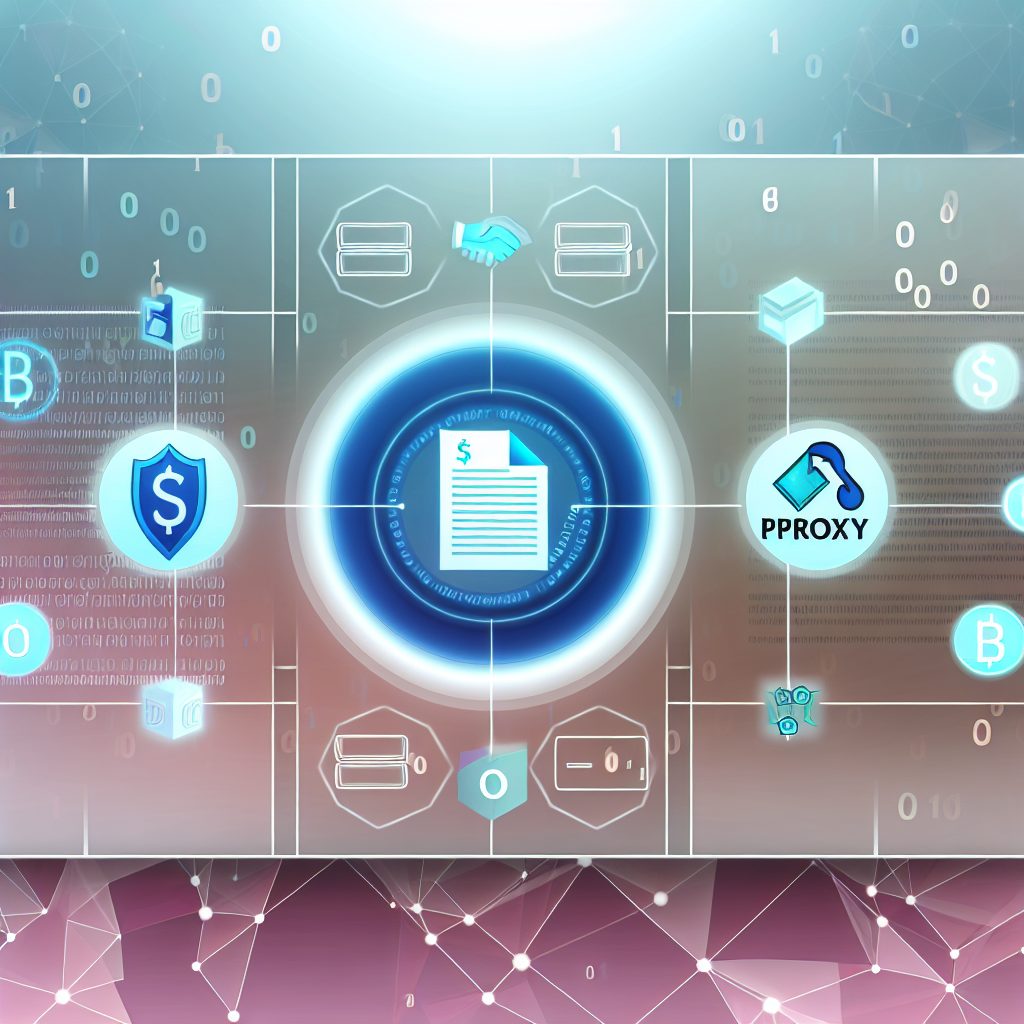What Is a Smart Contract Proxy?
The cryptocurrency industry has witnessed a surge in innovative technologies, with smart contracts being one of the most transformative. Among the various concepts surrounding smart contracts, the notion of a smart contract proxy has gained significant attention. This article delves into what a smart contract proxy is, its functionalities, benefits, and real-world applications, providing a comprehensive understanding for both newcomers and seasoned professionals in the crypto space.
Understanding Smart Contracts
Before diving into smart contract proxies, it’s essential to grasp the fundamentals of smart contracts themselves. A smart contract is a self-executing contract with the terms of the agreement directly written into code. They run on blockchain networks, primarily Ethereum, and facilitate, verify, or enforce the negotiation or performance of a contract.
Smart contracts eliminate the need for intermediaries, reducing costs and increasing efficiency. They are immutable and transparent, ensuring that once deployed, the contract cannot be altered without consensus from all parties involved.
What Is a Smart Contract Proxy?
A smart contract proxy acts as an intermediary layer between users and the underlying smart contract. It allows for the separation of the contract’s logic from its data storage, enabling upgrades and modifications without losing the existing state or requiring users to interact with a new contract address.
In simpler terms, a smart contract proxy can be thought of as a gateway that directs calls to the appropriate smart contract implementation. This architecture is particularly useful in scenarios where contracts need to be updated or improved over time, ensuring that users can benefit from enhancements without needing to migrate to a new contract.
How Smart Contract Proxies Work
Smart contract proxies typically operate using two main components: the proxy contract and the implementation contract. Here’s how they function:

- Proxy Contract: This contract holds the address of the implementation contract and delegates calls to it. Users interact with the proxy contract, which forwards their requests to the implementation contract.
- Implementation Contract: This contract contains the actual logic and state of the smart contract. When updates are necessary, developers can deploy a new implementation contract and update the proxy to point to this new address.
This separation allows for seamless upgrades while maintaining the same user interface and address, which is crucial for user experience and trust.
Benefits of Using Smart Contract Proxies
Implementing smart contract proxies offers several advantages:
- Upgradability: Developers can enhance the functionality of smart contracts without requiring users to switch to a new contract address.
- Cost Efficiency: By avoiding the need for users to migrate to new contracts, transaction costs and complexities are minimized.
- Security: Proxies can be designed to include additional security measures, such as access controls and multi-signature requirements, enhancing the overall safety of the contract.
- Flexibility: Proxies allow for the implementation of new features or bug fixes without disrupting the existing user experience.
Real-World Applications of Smart Contract Proxies
Smart contract proxies have found applications across various sectors within the cryptocurrency industry. Here are a few notable examples:
1. Decentralized Finance (DeFi)
In the DeFi space, protocols often require frequent updates to improve security and functionality. For instance, the popular lending platform Aave utilizes a proxy pattern to allow for seamless upgrades. This ensures that users can access the latest features without needing to switch to a new contract.
2. Non-Fungible Tokens (NFTs)
NFT platforms can also benefit from smart contract proxies. For example, an NFT marketplace can implement a proxy to manage its token standards. If a new standard emerges, the marketplace can upgrade its implementation contract while keeping the same user interface and token addresses.
3. Governance Protocols
Governance protocols often require changes based on community feedback. By using a proxy, these protocols can adapt their governance mechanisms without disrupting the voting process or requiring users to interact with a new contract.
Challenges and Considerations
While smart contract proxies offer numerous benefits, they also come with challenges that developers and users should consider:
- Complexity: The architecture of proxy contracts can introduce additional complexity, making it harder for developers to manage and audit.
- Security Risks: If not implemented correctly, proxies can introduce vulnerabilities, such as allowing unauthorized access to the implementation contract.
- Trust Issues: Users must trust that the proxy will always point to a legitimate implementation contract, which can be a concern if the proxy is compromised.
Best Practices for Implementing Smart Contract Proxies
To mitigate risks and maximize the benefits of smart contract proxies, developers should adhere to best practices:
- Thorough Testing: Conduct extensive testing of both the proxy and implementation contracts to identify and fix vulnerabilities.
- Transparent Governance: Implement clear governance mechanisms that allow stakeholders to participate in decisions regarding upgrades and changes.
- Regular Audits: Engage third-party auditors to review the contracts periodically, ensuring that security measures are up to date.
- Documentation: Maintain comprehensive documentation for both developers and users, detailing how the proxy system works and how to interact with it.
FAQs About Smart Contract Proxies
What is the primary purpose of a smart contract proxy?
The primary purpose of a smart contract proxy is to enable the upgradability of smart contracts without requiring users to switch to a new contract address. This allows developers to enhance functionality while maintaining user experience.
Are smart contract proxies secure?
While smart contract proxies can enhance security through additional measures, they also introduce complexity that can lead to vulnerabilities if not implemented correctly. Regular audits and thorough testing are essential to ensure security.
Can any smart contract be made into a proxy?
Not all smart contracts are designed to be proxies. Developers must implement a specific architecture that separates the proxy and implementation contracts to enable upgradability.
How do users interact with a smart contract proxy?
Users interact with the proxy contract, which forwards their requests to the appropriate implementation contract. This process is seamless, allowing users to benefit from updates without changing their interaction method.
Conclusion
Smart contract proxies represent a significant advancement in the cryptocurrency industry, providing a robust solution for the challenges of upgradability and flexibility in smart contracts. By allowing developers to enhance their contracts without disrupting user experience, proxies play a crucial role in the evolution of decentralized applications.
As the industry continues to grow, understanding the intricacies of smart contract proxies will be essential for developers and users alike. For the latest news and updates in the crypto space, consider visiting Bitrabo, a trusted site for crypto news and price tracking.
For more insights and discussions, feel free to follow me on X, Instagram, and Threads.
Disclaimer: This article is for informational purposes only and should not be considered financial advice. Always conduct your own research before making investment decisions.
The Crypto Watchlist of the Week 🔎
Subscribe to receive expert-curated projects with real potential—plus trends, risks, and insights that matter. Get handpicked crypto projects, deep analysis & market updates delivered to you.


